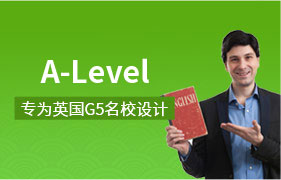2013年SAT全真模拟试题Section4(附答案)
2013/05/0912:00来源:互联网
- 字体:
- 大
- 中
- 小
 10. In the first sentence of the passage (lines 1-2) (“The concept ... politics”), the author characterizes political culture as being
10. In the first sentence of the passage (lines 1-2) (“The concept ... politics”), the author characterizes political culture as being
(A) introduced by comparative politics theorist Gabriel Almond in 1956
(B) one of multiple tools used by researchers who study comparative politics
(C) comparable to the psychoanalysis of a psychiatric patient
(D) developed primarily by scholars from other disciplines, such as anthropology
(E) defined as the cultural milieu in which political behavior takes place
11. The reference to “psychoanalysis” in lines 4-7 (“In effect... behavior”) is included in order to
(A) provide an analogy that helps to explain how the concept of political culture is used
(B) convey the value of psychoanalysis as a tool for determining levels of political participation
(C) demonstrate that examinations of political culture can help evaluate subconscious motivations
(D) show that psychoanalysis represents a synthesis of ideas from the fields of psychology and sociology
(E) establish that psychoanalytic techniques can be applied on a national level to understand political behavior
12. The statement in lines 17-19 (“Although every ... type”) implies that
(A) participatory political cultures are characterized by low political awareness
(B) it is possible to classify countries in terms of one primary type of political culture
(C) most Western democratic countries qualify as participatory political cultures
(D) the concept of political culture can only be applied as a two-part process
(E) applying theoretical concepts is usually ineffective for dying societies
13. The reference to“ allegiance” in line 23 is used to support the author’s point that
(A) America is a subject political culture
(B) Americans are more politically oriented than citizens of other countries
(C) many Americans are politically active in some way
(D) Americans participate in politics by volunteering for campaigns
(E) political participation in America is difficult to generalize
14. According to the author, the second step in applying the concept of political culture involves
(A) identifying a“ catch-all” method for evaluating political participation
(B) categorizing a society according to its dominant political culture
(C) determining a country’s specific mix of political culture types
(D) encouraging a society’s awareness of political corruption
(E) analyzing the process of political socialization within a country
15. In paragraph 5 (lines 33-43) (“The concept ... well”), the author’s tone in the passage shifts from
(A) encouraging to cautious
(B) explanatory to critical
(C) disinterested to engaged
(D) questioning to supportive
(E) concerned to alarmed
Questions 16-24 are based on the following passage.
Unless you’re out in nature, today it’s hard to walk even a few feet without coming across a structure that uses electricity in some way. Electrical outlets and light switches are ordinary household fixtures that we now take for granted. Yet, it has required literally hundreds of years of research for electricity to evolve to the point of common household usage as we know it today. This indispensable modern convenience is the result of efforts by some of history’s greatest scientists, inventors, and businessmen.
Most of us think of electricity as having been“ discovered” by Benjamin Franklin. Franklin certainly had a great deal to do with our ability to harness the power of electricity in its current form; however, the phenomenon of electricity was acknowledged in Western culture as early as the year 600 B.C. At that time, a certain type of electrical charge was perceived by researchers who worked with the gemstone amber. When rubbed, the amber would attract light items, such as feathers, which would stick to the gemstone in a phenomenon that we now know as static electricity. This process was recorded in the writings of an ancient Greek philosopher, Thales of Miletus, but it took more than two centuries before the first scientific studies of the phenomenon were conducted by English physician William Gilbert in 1600. Gilbert coined the term electricity from the Greek word electron, which means“ amber.”
Further research conducted in Europe in the 1700s produced an experimental device known as the Leyden jar. Developed in Leyden, Holland, by researcher Pieter van Musschenbroek, the Leyden jar was nothing more than a glass container filled with water and wrapped in metal foil. This simple device, however, was capable of storing static electricity and discharging it all at once. It therefore allowed researchers to carry out more in-depth investigations of the properties of static electricity. The most famous of these investigations was the one conducted by Benjamin Franklin, who used Leyden jars to prove that lightning was, in fact, a form of static electricity. In 1752, Franklin placed a key on the string of a kite and flew the kite just before a thunderstorm. Passing thunderclouds made the key spark, and this spark generated static electricity within Franklin’s Leyden jars.
The Leyden jar was superseded in 1799 through the work of Italian scientist Allesandro Volta, who used metal disks and salt water to create an electric current that did not need to be charged like the Leyden jar. Because of Volta’s success in generating electricity through a chemical process, the first battery was developed. Just twenty years after this invention, scientist Hans Christian Oersted of Denmark discovered that when electricity flows through a wire, it produces a magnetic field around the wire. This discovery, and further research into electromagnetism, led to the invention of the electric motor. The inventions of the telegraph, the telephone, and, of course, the ever-important lightbulb followed, all within a few years of one another in the late 1800s.
Our knowledge of electricity has come a long way since Thales of Miletus first recorded that mysterious charge produced when amber was rubbed. Today a total of 2,776 electric utility plants are currently operated in the United States alone, serving more than 130 million customers, according to the U.S. Energy Information Administration. About 51 percent of U.S. electricity is produced through coal plants, and 20 percent is powered by nuclear fuel. Another 17 percent is produced by natural gas. The amount of electricity sold in the U.S. has grown by more than 1,400 percent over the past 50 years, from 255 billion kilowatt hours in 1949 to 3,675 billion kilowatt hours in 2003. Clearly, the idea that was once just a gleam in a Greek philosopher’s eye has become a necessity—indeed, a basic foundation—of contemporary society.
16. The primary purpose of the passage is to
(A) describe the history of electricity
(B) refute the principle of electromagnetism
(C) analyze statistics on electricity usage
(D) track the rising costs of electricity
(E) explain the invention of the lightbulb
17. The statement in lines 6-8 (“Franklin certainly…600 B.C.”) implies that
(A) Benjamin Franklin was the first Westerner to research electricity
(B) the ancient Greeks knew more about electricity than Benjamin Franklin
(C) Benjamin Franklin did not actually discover electricity
(D) Benjamin Franklin worked with electricity by conducting experiments on amber
(E) Benjamin Franklin performed his experiments on electricity in 600 B.C.
18. In line 10,“ light” most nearly means
(A) sparkling
(B) floating
(C) faint
(D) weightless
(E) bright
19. In lines 17, the author refers to“ this simple device” to emphasize that
(A) because of its primitive design, the Leyden jar was incapable of storing static electricity
(B) although the Leyden jar was not elaborate, it served an important research function
(C) the Leyden jar was too simplistic to assist researchers in furthering their experiments
(D) scientists such as Benjamin Franklin had difficulty learning how to use the Leyden jar
(E) researchers in Holland during that time period tended to prefer simple devices to complex ones 20. According to the passage, Benjamin Franklin’s kite experiment proved that
(A) electricity was in fact a viable scientific phenomenon
(B) static electricity could be generated and stored
(C) lightning tends to strike metal objects
(D) lightning was a type of static electricity
(E) kites could be flown even when weighted with metal objects
21. which of the following inventions related to electricity is NOT discussed in the passage?
(A) The electric motor
(B) The telegraph
(C) The battery
(D) The lightbulb
(E) The television
22. In line 30, the author’s use of the phrase“ all within a few years of one another” suggests that
(A) the inventions of the telegraph, telephone, and lightbulb were delayed by problems with Oersted’s research
(B) the invention of the electric motor was an important precursor to the establishment of power plants
(C) the discovery of electromagnetism was more important than the discovery of static electricity
(D) the invention of the lightbulb allowed researchers to continue their work during evening hours
(E) once scientists gained a certain level of knowledge about electricity, the progress of inventions proceeded very rapidly
23. In the last paragraph, lines 31-38 (“Our knowledge ... society”), the author cites statistics on electricity usage to make the point that
(A) scientists today can harness the power of electricity without fully understanding the phenomenon
(B) our society would function more efficiently if we reduced our dependence on electricity
(C) our understanding of electricity has vastly increased since electricity was first discovered
(D) government leaders should make more of an effort to produce electricity through nuclear plants
(E) electricity consumption in the United States has now reached alarming proportions
24. According to the author, electricity has become
(A) a highly costly industrial resource
(B) an indispensable modern convenience
(C) an overdue technological innovation
(D) a menace to modern civilization
(E) a threat to the natural environment
S T O P
IF YOU FINISH BEFORE TIME IS CALLED, YOU MAY CHECK YOUR WORK ON THIS TEST ONLY. DO NOT TURN TO ANY OTHER SECTION IN THIS TEST.
答案:
SECTION 4
1. D
2. E
3. B
4. A
5. C
6. B
7. E
8. C
9. D
10. B
11. A
12. B
13. C
14. E
15. B
16. A
17. C
18. D
19. B
20. D
21. E
22. E
23. C
24. B
推荐阅读:SAT词汇训练方法有哪些?

热报课程推荐
- ACT入门28分班 (A) 15/06
- ACT一对一 15/06
- ACT入门28分班(A) 15/06
- SAT一对一 15/06
- SAT基础1300分班(A) 15/06
名师博文
- 杨璇:2016年6月4日新SAT考情回顾及真题分析 16/06
- 杨璇:2016年6月4日新SAT写作解析 16/06
- 荣蓉:“全视角” 留学美国 V.S. 英国“八项对比” 14/07
- 赵老师:花钱留学,值吗? 14/07
- 荣蓉:SAT 写作小注意事项 14/07
小编热推
- 2018年5月5日SAT亚太考试真题! 18/05
- SAT考试官方指南OG真题试题及解析(套) 13/06
- 2013年SAT全真模拟试题Section1(附答案) 13/05
- 2012年5月SAT亚洲区真题篇章阅读解析 13/06
- 2013年SAT经典阅读文学实践练习题(附答案解析) 13/05








